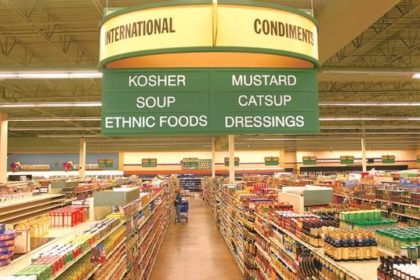
In America, where 40% of the population identifies as nonwhite, why do grocery stores still have an ethnic aisle? The outdated aisle initially began after World War II as a way for soldiers to buy the food they ate while in Italy, Germany or Japan. But the European foods, like pasta sauces and sauerkraut, eventually became integrated with the rest of the store, while foods from BIPOC countries stayed put.
Heads of ethnic food brands and grocery chains have been pushing for a change, but it’s been a hard sell. Doing away with the aisle is a layered problem — and still not the most popular approach with food professionals.
“Several food purveyors of colors see the aisle as a necessary evil — a way to introduce their products to shoppers who may be unfamiliar with, say, Indian food — though a barrier to bigger success,” reads an article in The New York Times.
Some ethnic brands come to store buyers with little capital to get their products on the shelf, so the only spot for them is on the ethnic aisle. They will never break out unless they’re acquired by a larger company. Larger corporations, like Pepsi or Nestlé, can afford to pay stores to put their products on shelves with prime product placement. And large ethnic brands (like Goya beans and Maruchan ramen) are placed on both ethnic aisles and their respective traditional product section because they’re considered broadly recognized.
But many products with international flavors made by nonwhite brands are not placed on the ethnic shelf. The Times shares the story of Toyin Kolawole, who runs the African ingredients brand Iya Foods. Kolawole tried to get her cassava flour into the flour aisle with a Midwestern retailer with no success. But when cassava flour began trending as a substitute for traditional flour, bigger companies launched their own cassava brands — which were put in the flour aisle.
On the flip side, other food professionals note that consumers turn to the ethic aisle in search of international flavors. Customers like the convenience. There is a fear that unique ingredients (like tamarind or pomegranate molasses) without a clear spot in a grocery store would get lost in a conventional aisle. And, even worse for some brands, integration in an American grocery store means being “divorced from its cultural background.”
Read more (The New York Times)
